How Long Do Trojan Golf Cart Batteries Last
If you’re wondering how long Trojan golf cart batteries last, you’re not alone. Trojan is one of the most trusted names in deep-cycle battery technology, and their products are especially known for powering golf carts efficiently. Understanding the true lifespan of Trojan golf cart batteries is essential whether you're a golf enthusiast, a course operator, or someone using a golf cart for personal transportation. In this guide, we'll explore every aspect that affects the longevity of these batteries, how to extend their life, and how they compare with other options in the market.
- Understanding Golf Cart Batteries From Trojan
- Average Lifespan of Trojan Golf Cart Batteries
- Factors That Affect the Life of Golf Cart Batteries
- Signs Your Golf Cart Batteries Are Aging
- Comparing Trojan Golf Cart Batteries With Other Brands
- Proper Maintenance to Extend Battery Life
- Best Charging Practices for Trojan Golf Cart Batteries
- Real-World Lifespan Testimonials
- When Should You Replace Golf Cart Batteries?
- Are Trojan Golf Cart Batteries Worth the Investment?
- Warranty Coverage on Trojan Golf Cart Batteries
- Environmental Impact and Recycling
- The Future of Trojan Golf Cart Batteries
- Final Thoughts on How Long Trojan Golf Cart Batteries Last
Understanding Golf Cart Batteries From Trojan
Trojan Golf Cart Batteries are deep-cycle lead-acid batteries specifically designed to provide steady power over long periods. Unlike starting batteries that deliver short bursts of high energy, golf cart batteries focus on endurance and reliability.
Trojan’s batteries typically fall into one of three main categories:
Flooded Lead-Acid Batteries (FLA) – Require regular maintenance like watering.
Absorbent Glass Mat (AGM) Batteries – Sealed and maintenance-free.
Gel Batteries – Also sealed and suitable for specific applications.
Lithium-Ion Batteries (Newer Line) – High-efficiency, fast charging, and long life.
Each of these battery types offers different longevity and maintenance profiles, which directly influence how long Trojan golf cart batteries last in real-world use.
>>See also Ways to Stop a 12V Battery From Getting Overcharged
Average Lifespan of Trojan Golf Cart Batteries
Flooded Lead-Acid Trojan Golf Cart Batteries
Trojan's most iconic batteries are the flooded lead-acid type. Under proper conditions, these batteries can last between 4 to 8 years. However, their lifespan depends heavily on factors like usage frequency, depth of discharge (DoD), and maintenance.
Realistic Range:
Heavy use (daily): 3–5 years
Moderate use (weekly): 5–7 years
Light use (occasional): 6–8 years
AGM and Gel Trojan Golf Cart Batteries
Trojan's AGM and Gel golf cart batteries offer convenience and lower maintenance at the cost of slightly shorter lifespan. You can expect 3 to 6 years depending on how well you maintain charge cycles and storage conditions.
Pros:
No watering required
Safer in enclosed environments
Spill-proof
Cons:
More sensitive to overcharging
Shorter life under high-discharge applications
Trojan Lithium Golf Cart Batteries
The newer lithium-ion range from Trojan is a game-changer. These batteries can last 8 to 12 years, often backed by long warranties and thousands of charge cycles.
Benefits:
3,000+ cycles at 80% DoD
No maintenance
Rapid charging
Lightweight
Despite a higher upfront cost, lithium batteries can often be the most economical choice over time.
Factors That Affect the Life of Golf Cart Batteries
Depth of Discharge (DoD)
One of the key indicators of battery health is the depth of discharge. For example:
Regularly discharging below 50% shortens life.
Keeping the battery above 50% often doubles its life span.
For lead-acid batteries, shallow discharges (30-50%) promote longer life.
Charge Cycle Management
Every battery has a limited number of charge cycles. Proper management is critical.
Tips:
Avoid deep discharges unless necessary.
Charge after every use, even partial ones.
Don’t leave the battery in a discharged state.
Maintenance Routine
Flooded Trojan Golf Cart Batteries require watering, equalization charging, and terminal cleaning. Ignoring these routines accelerates deterioration.
Climate and Temperature
Extreme temperatures—especially heat—can significantly reduce battery lifespan.
Ideal range: 65°F to 85°F (18°C to 29°C)
High temps increase internal corrosion
Cold temps reduce available capacity
If storing batteries long-term, ensure it’s in a climate-controlled environment.
Signs Your Golf Cart Batteries Are Aging
It’s important to know when your batteries are approaching the end of their service life. Here are the warning signs:
Reduced run time: Cart won’t go as far as it used to.
Longer charging time: Batteries take much longer to reach full charge.
Visible swelling or corrosion: Physical damage indicates chemical instability.
Frequent resets or interruptions: The cart shuts down randomly.
Low voltage under load: Sudden drops in performance during acceleration.
If you observe these issues consistently, it might be time to replace your Trojan Golf Cart Batteries.
Comparing Trojan Golf Cart Batteries With Other Brands
Trojan batteries often cost more than lesser-known brands, but they justify the price through performance and longevity.
|
Brand |
Average Lifespan |
Maintenance |
Price Range |
|
Trojan |
5–8 years (flooded), 8–12 years (lithium) |
Moderate to Low |
$$$ |
|
Crown |
4–6 years |
Moderate |
$$ |
|
US Battery |
3–6 years |
Moderate |
$$ |
|
Powertron |
2–5 years |
Low |
$ |
|
Duracell (GC2) |
3–5 years |
Moderate |
$–$$ |
Proper Maintenance to Extend Battery Life
Regular Watering (For Flooded Batteries)
Use only distilled water.
Maintain water levels above the plates.
Never overfill.
Equalization Charging
Equalization charging balances voltage across cells, preventing sulfation and stratification.
Should be done every 30 days or as needed.
Only on flooded batteries, not AGM or Gel.
Cleaning Terminals
Use a solution of baking soda and water to clean terminals and prevent corrosion. Apply terminal grease or protector afterward.
Charge Storage Tips
Never store discharged batteries.
Store in a cool, dry place.
Disconnect from the cart or use a smart charger.
Best Charging Practices for Trojan Golf Cart Batteries
Use the Right Charger
Ensure your charger matches the battery’s voltage and chemistry. For Trojan Golf Cart Batteries:
Flooded and AGM models: Use 36V/48V deep-cycle chargers
Lithium models: Use lithium-compatible smart chargers
Don’t Overcharge
Overcharging leads to water loss and heat damage. Smart chargers with auto shut-off are best.
Don’t Let Them Sit Unused
If the cart sits idle, batteries may self-discharge. Use a maintainer to keep them topped up during long-term storage.
Real-World Lifespan Testimonials
Golf cart owners frequently report varying lifespans for their Trojan batteries. Here are a few real-life scenarios:
Golf Course Fleet: 60 carts using T-875 batteries lasting 4.5 years on average.
Residential User: T-105 batteries used weekly lasted 7 years with minimal maintenance.
RV User (Boondocking): T-1275 batteries lasting 5 years, often deeply discharged.
These results align with Trojan’s own technical data sheets, which highlight the effects of charge depth, maintenance, and ambient temperature.
When Should You Replace Golf Cart Batteries?
While the general rule is every 4 to 8 years, the right time depends on performance.
Replace when:
Voltage drops below 70% capacity
You notice range loss of 30% or more
Maintenance can no longer restore full power
It’s best to replace all batteries in a pack together, even if only one fails. Mixing old and new batteries leads to uneven performance and faster degradation.
Are Trojan Golf Cart Batteries Worth the Investment?
Yes, especially for users looking for long-term reliability. While Trojan Golf Cart Batteries come with a higher upfront cost, they provide:
Longer cycle life
Proven brand reliability
Consistent performance
Excellent manufacturer support and documentation
If you're looking to avoid frequent replacements or downtime, Trojan is often the smarter long-term investment.
Warranty Coverage on Trojan Golf Cart Batteries
Trojan offers warranties ranging from 18 months to 8 years, depending on the model:
Flooded batteries: 18–36 months
AGM: 24–36 months
Lithium: Up to 8 years (with registration)
Keep proof of purchase, usage logs, and maintenance records to support any warranty claims.
Environmental Impact and Recycling
Trojan is committed to sustainability. All of their lead-acid Golf Cart Batteries are 99% recyclable, including the lead, plastic casing, and electrolyte.
How to Recycle:
Return to the point of sale (many retailers accept old cores)
Contact your local recycling center
Use Trojan’s recycling partners listed on their website
Proper recycling prevents toxic materials from entering landfills and supports eco-friendly manufacturing.
>>See also What Is the Recommended Charging Current for a 12V 7Ah Battery
The Future of Trojan Golf Cart Batteries
With a growing emphasis on sustainability and efficiency, Trojan is investing heavily in lithium technology. Future models will likely feature:
Enhanced Bluetooth monitoring
App-controlled diagnostics
Expanded warranties
Smart BMS (Battery Management Systems)
For those investing in long-term electric mobility, upgrading to lithium Trojan Golf Cart Batteries may be the next logical step.
Final Thoughts on How Long Trojan Golf Cart Batteries Last
Trojan Golf Cart Batteries are among the most reliable and longest-lasting on the market. When cared for properly, flooded models can last up to 8 years, while lithium versions may last well beyond a decade. Maintenance, usage habits, and environmental conditions all play crucial roles in determining their exact lifespan.
Understanding the key factors that impact your battery's life—such as charging behavior, storage, and upkeep—will help you get the most out of your investment. Whether you’re managing a fleet or using a single cart on weekends, Trojan batteries deliver consistent value and performance.
So, how long do Trojan golf cart batteries last? The answer depends on how you treat them—but with the right approach, they’ll go the distance.

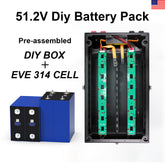

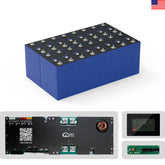

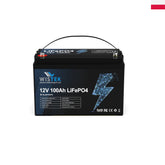

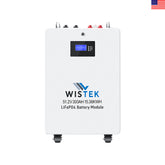
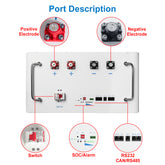
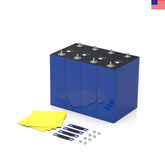



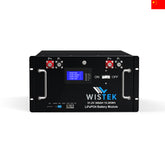
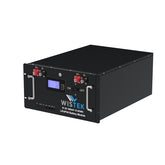
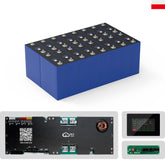








Leave a comment
All blog comments are checked prior to publishing